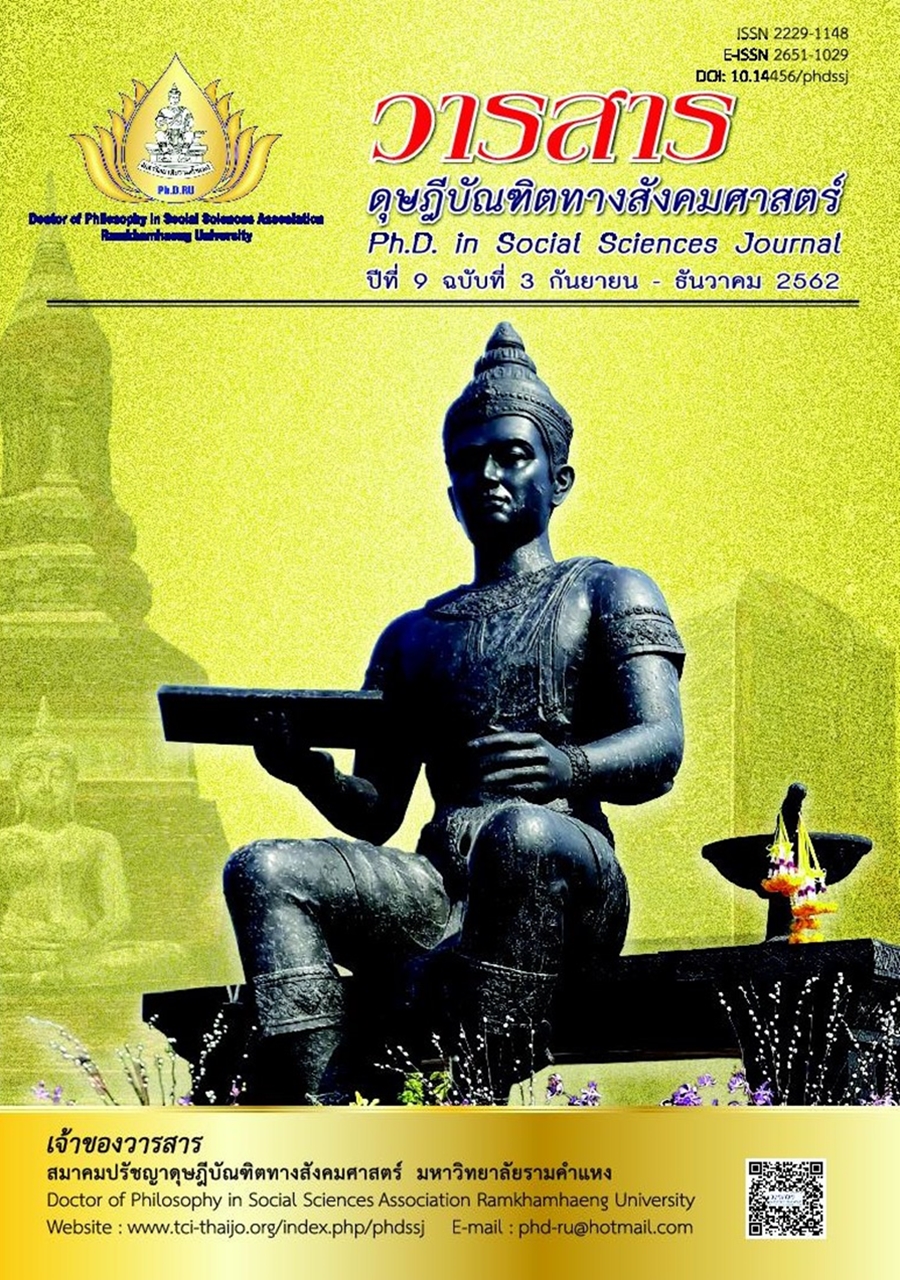ตัวแบบของคณะกรรมการชุมชนที่เข้มแข็งในการพัฒนาชุมชนแออัด ในกรุงเทพมหานคร
Main Article Content
บทคัดย่อ
การศึกษาครั้งนี้มีวัตถุประสงค์เพื่อ (1) ศึกษาสภาพแวดล้อมของชุมชนแออัดในกรุงเทพมหานคร (2) ศึกษาบทบาทของคณะกรรมการชุมชนในปัจจุบันและอนาคตในการพัฒนาชุมชนแออัด (3) ศึกษาปัจจัยที่สนับสนุน ส่งเสริมบทบาทที่เข้มแข็งของคณะกรรมการชุมชนในการพัฒนาชุมชนแออัด และ (4) เสนอแนะตัวแบบคณะกรรมการชุมชนที่เข้มแข็งในการพัฒนาชุมชนแออัดในกรุงเทพมหานคร
การวิจัยนี้เป็นการวิจัยเชิงคุณภาพ เก็บรวบรวมข้อมูลโดยใช้การสัมภาษณ์เชิงลึก โดยสัมภาษณ์บุคลากรของฝ่ายพัฒนาชุมชนและสวัสดิการสังคม คณะกรรมการชุมชน และประชาชนในชุมชนแออัด 6 ชุมชน จำนวนทั้งหมด 30 คน
ผลการศึกษา พบว่า
1. จากข้อมูล พบว่า ชุมชนแออัดที่ทำการศึกษาทั้ง 6 ชุมชน เคยมีปัญหาด้านยาเสพติดแต่คณะกรรมการชุมชนเกือบทุกคนมีความมุ่งมั่นที่จะดำเนินงานแก้ไขปัญหานี้ให้หมดไปจากชุมชน
2. บทบาทเดิมของคณะกรรมการชุมชน มีจุดอ่อนและด้วยข้อจำกัดบางประการ ไม่สามารถดำเนินงานให้บรรลุเป้าหมายได้ ปฎิบัติงานตามระเบียบว่าด้วยคณะกรรมการชุมชนและชุมชน ดังนั้น ควรปรับเปลี่ยนบทบาทใหม่ของคณะกรรมการชุมชน
3. ปัจจัยที่ส่งผลให้คณะกรรมการชุมชนมีความเข้มแข็งในการพัฒนาชุมชนแออัด ประกอบด้วย ความเป็นผู้นำองค์ความรู้ของคณะกรรมการชุมชน โครงสร้างของคณะกรรมการชุมชน เครือข่ายชุมชน การดำเนินงานของเจ้าหน้าที่ การสนับสนุนจากหน่วยงานต่าง ๆ และการมีส่วนร่วมของประชาชน
Article Details

อนุญาตภายใต้เงื่อนไข Creative Commons Attribution-NonCommercial-NoDerivatives 4.0 International License.
บทความวิชาการ บทความวิจัย และบทวิจารณ์หนังสือในวารสารดุษฎีบัณฑิตทางสังคมศาสตร์ เป็นความคิดเห็นของผู้เขียน มิใช่ของคณะผู้จัดทำ และมิใช่ความรับผิดชอบของสมาคมปรัชญาดุษฎีบัณฑิตทางสังคมศาสตร์ มหาวิทยาลัยรามคำแหง (กรณีการทำวิจัยในมนุษย์ ผู้วิจัยต้องผ่านการอบรมจริยธรรมการวิจัยในมนุษย์ และนำหลักฐานมาแสดง)
เอกสารอ้างอิง
Bhuahakosa, K. (2011). Complete learning community development guide. Bangkok: National Research Council of Thailand. [In Thai]
Bureekul, T. (2005). Participation: Concept and process. Bangkok: King Prajadhipok’s Institute. [In Thai]
Chompurat, C. (2006). Factors affecting occupational group’ strength in Chiangmai Province. Quality of Life and Law Journal, 2(2), 101-124. [In Thai]
Fuller, C. S. (2001). Antecedents to high performance breakthrough in permanent self-managed teams. Doctoral dissertation of organization development, Benedictine University, Chicago.
Kaewhawong, T. (2000). Strengthening community, community, and civil society. Khon Kaen: Klangnanawittaya Printing House. [In Thai]
Kaewpeng, D. (2013). Community. Songkla: Numsilp Advertise. [In Thai]
Murugan, S. (2014). Community organization and social action. Coimbatore, India: Social Work Department.
National Human Rights Commission of Thailand Office. (2015). Community rights and impacts of the Southern development project. Bangkok: Author. [In Thai]
Panyanuwat, A. (2005). Plural community education: Lessons from field research. Bangkok: Learning and Empowerment for Healthy Community Project. [In Thai]
Ruangkalapawongse, A., Ruangkalapawongse, S., Sripong, V., & Spiller, P. (2014). Development of the Strengths of the Natural-Agricultural Network of Wat Yannasangwararam Community Amphur Banglamung, Cholburi Province. SDU Research Journal (Humanities and Social Sciences), 10(2), 73-90. [In Thai]
Samakakarn, S., & Prateep, C. (2010). Urban and rural social development administration. Nonthaburi: Sukhothai Thammathirat Open University Press. [In Thai]
Sanders, I. T. (1958). Theories of community development. Photocopy of Rural sociology, 23(1), 1-12.
Sritong, N. (2008). Enhancing the capacity of leadership in community development. Bangkok: O. S. Printing House. [In Thai]
Techaatik, S. (2010). District leadership guide, strengthening community leaders, organization and networks. Bangkok: Thai Health Promotion Foundation. [In Thai]
Waraphak, M. (2002). Bureaucracy is died. Bangkok: Matichon. [In Thai]


